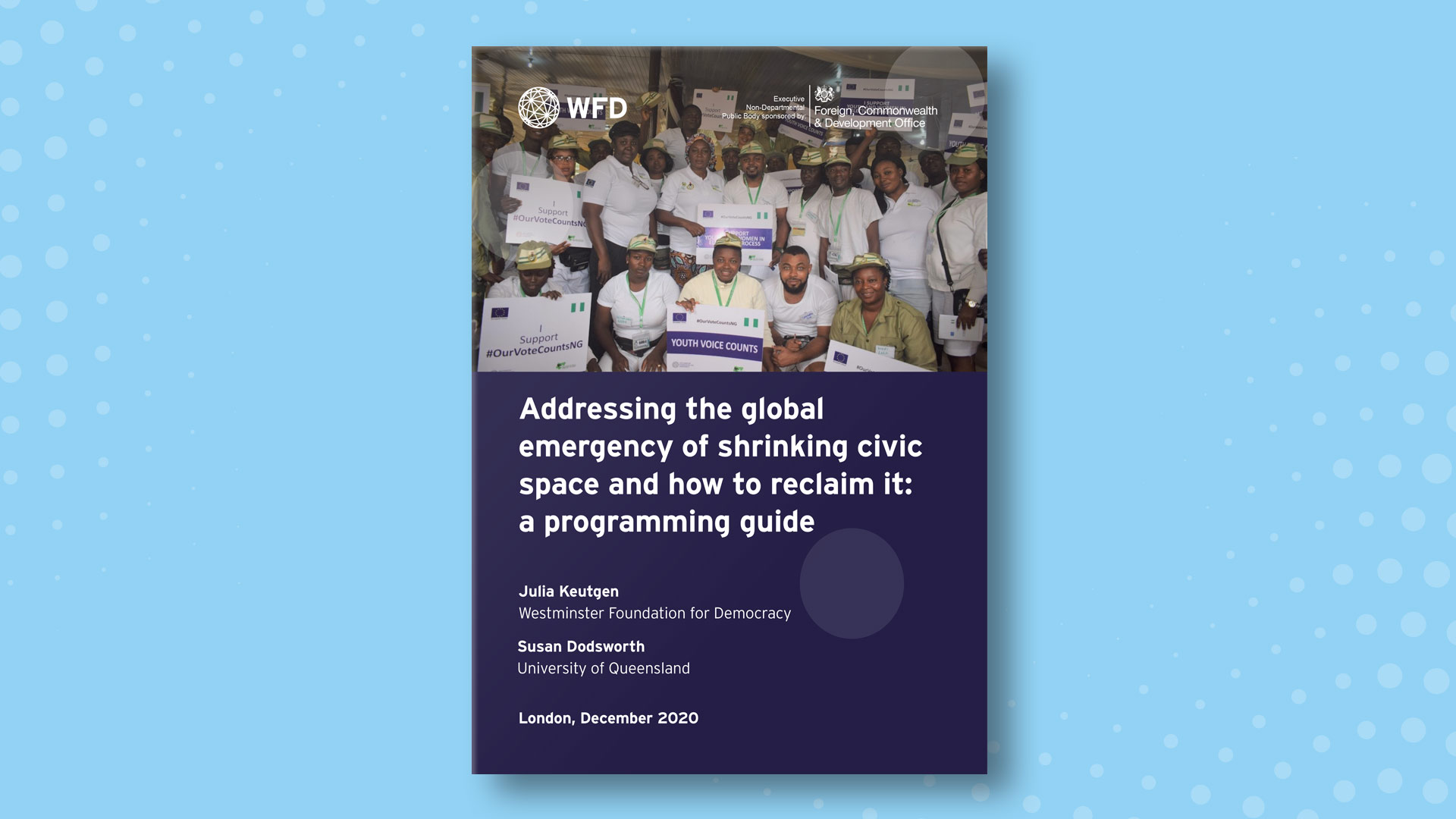Over the last 10 years an increasing number of governments have adopted new laws and practices that constrain civic space – the set of conditions that allow civil society and individuals to organise, participate and communicate freely and without discrimination, and in doing so, influence the political and social structures around them. These constraints have taken a wide variety of forms, and affect a diverse range of actors, but many have targeted formal civil society.
Civil society does not, however, exist in isolation, being an integral part of democratic systems and societies. Therefore, current efforts by governments around the world to ‘shrink’ the space for civil society – or to keep that space at very minimal level – need to be understood as part of a wider trend towards electoral authoritarianism, illiberal democracy or political backsliding – a trend that is affecting all stakeholders in democratic societies, not only civil society.
The issue of closing civic space has important consequences for the work of democracy assistance providers. Parliaments play a critical role in shaping civic space. Governments often use new legislation to close civic space by stressing the need for effective regulation and oversight (often highlighting the value of preventing fraud, deterring terrorist funding, or stopping ‘foreign agents’ from unduly influencing domestic affairs). This argument provides a veneer of legitimacy, deflecting international and domestic criticism while ignoring the main purpose of this legislation: to weaken any potential opposition.
This guide is designed to provide democracy practitioners and other interested readers with:
- An explanation of what civic space is, and what attempts to close civic space look like in practice;
- An overview of data sources that can be used to measure changes in civic space, including the strengths and weaknesses of different sources of information;
- An explanation of some of the underlying risks;
- Practical action points for incorporating the issue of civic space into projects;
- Guidance on how to respond to some of the tough questions that may come up in this area; and
- Information on other useful resources that practitioners can draw on to support their work on civic space.

